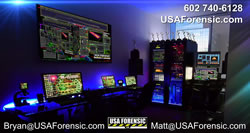The purpose of any investigation is a search for the truth. The goal of any investigation and/or resultant adjudication should be the presentation of unbiased facts and evidence and their presentation to a prosecutor. The advocacy for the investigators and prosecutors should ultimately be for the facts and evidence. However, from time to time, police investigators shade their fact-finding function into an attempt to achieve what they believe to be “justice.”
Laws pertaining to self-defense today such as “Stand your ground,” also referred to as the “Castle Doctrine,” applied by either common law or state statute in 46 states, represent significant changes in a citizen’s civil rights. As a result, we have seen extraordinary changes in our criminal justice system. However, such laws are not without their controversy. These laws present challenges to political, racial, and police practices challenges at all levels of the criminal and civil justice systems.
Components such as race, religion, and ages of the involved parties may have little if anything to do with the forensic fact pattern. The prosecutor’s own beliefs regarding gun ownership, community activism, and media influence can occasionally become key elements in the determination as to whether or not to prosecute the citizen who asserts that they were forced to use deadly force to defend themselves or others. Again, as with use of force by police and officer-involved shootings, politics and speculation rather than forensic facts can affect the investigation outcome and a prosecutor’s decision to move forward toward filing on and prosecuting the citizen defender.
As a person who has investigated hundreds of officer-involved shootings, I am keenly aware that when a shooting involves one of their own, police agencies and investigators spare no resources or expense in their attempt to reconcile statements and forensic evidence in an effort to resolve the shooting—hopefully in favor of their officer(s). In such cases, the county prosecutor usually works in lock-step with police investigators and forensic technicians in arriving at legal determinations. Depending upon the fact pattern, more often than not the prosecutor rules that the involved officer(s)’ use of deadly force was legally justified. In my line of work, this is referred to as a “good shoot.”
Citizens forced to use deadly force are different from police officers. However, police investigators need to use particular care in how they approach self-defense investigations.
The documented fact patterns of many civilian self-defense shooting homicide incidents are not dissimilar from those in officer-involved shootings. A felony is being committed, and the citizen defender and perhaps his or her family are suddenly threatened without warning, often in the dead of night. The confrontation is a rapidly evolving event; there is no police “back-up” immediately available; and there is often a disparity of force posed by the assailant(s). The citizen defender experiences a sincere belief based upon a totality of circumstances that his or her life, the lives of other family members, or people at his or her business are being threatened. In the blink of an eye, the citizen defender is forced to use deadly force to stop that threat.
While this article is not intended to be a legal opinion on the laws regarding self-defense and deadly force, it is important to provide some legal context. While there are some slight differences in the laws governing the use of deadly force between various states, there are five basic elements regarding the legal justification of its use to resolve deadly confrontations:
- Defender as an "Innocent Party” – The citizen defender must be seen as an innocent party. This means that the citizen using deadly force must not be viewed as the aggressor who initiated or escalated the confrontation.
- Imminent fear of life – The citizen asserting self-defense must have been in imminent fear of either serious bodily injury or death to themselves or another person(s). That fear must be seen as having been objectively reasonable in consideration of the “totality of circumstances” that transpired during the incident. It is important to keep in mind that ultimately the person shot does not even have to have been found to be actually armed with a weapon, as long as the citizen asserting self-defense’s expressed fear for their life or that of another is seen to have been objectively reasonable at the moment they used deadly force.
- Disparity of force – If it is objectively reasonable, safe, and practical for a citizen defender to stop a threat using a skill or weapon that is less than lethal, he or she is required to do so. A citizen is also required to cease using deadly force once the threat of serious injury or death has ended. Disparity of force also refers to circumstances in which the assailant is larger, stronger, younger, or faster and/or when the citizen is threatened by more than one assailant. In such situations, it might be completely reasonable for a citizen defender to elevate to the use of deadly force. It is also important to bear in mind that citizen defenders are not required to resort to less lethal means of defense before using deadly force.
- Retreat as an option of defense – A number of states require that a citizen defender disengage from a deadly threat but only if it is safe and practical to do so. However, it is important to remember that citizen defenders are not required to place themselves and others at greater risk by attempting to escape from a deadly threat. Human factors such as “the reactionary gap,” action–reaction perception lag time, and stress-induced psychophysiological challenges play a major role as to whether it is actually safe or prudent to retreat in the face of imminent jeopardy of serious bodily injury or death at close distances.
- The “Castle Doctrine” – This doctrine refers to laws in 46 states governing the use of deadly force in defense of a citizen’s home. Essentially, a citizen’s use of deadly force in defense of his or her home when the occupant defender is attempting to stop or prevent a felony is seen as having been justified provided the totality of circumstances support the citizen defender’s claim of self-defense and/or defense of another.
The Problems with Civilian Self-Defense Shooting Investigations
There are a number of common problems I have seen as a forensic expert when reexamining and analyzing law enforcement investigations of civilian shooting incidents for which a self-defense claim is asserted. Once critical mistakes are made, it can be very difficult, if not impossible, to salvage an investigation. For an attorney defending an unfairly arrested and prosecuted client, identifying these investigative and prosecutorial mistakes is critical. What are the classic investigative mistakes?
- Faulty, incomplete initial investigation by first responders – Reconciling statements with forensic evidence is a common problem in any complex investigation. Look, this is not CSI where experienced detectives respond to every shooting. Depending upon the jurisdiction, patrol officers rather than experienced detectives are more likely than not going to be the first “investigators” on-scene in any shooting. Generally, in smaller agencies, the average patrol officer and supervisor may lack experience in crime scene management, forensic interviewing, and the identification and collection of evidence. As a result, a problem immediately arises that the first officer(s) on-scene may do a poor to mediocre job establishing and securing the crime scene, interviewing witnesses, and interviewing the citizen asserting self-defense.
- Manipulating, damaging and destroying a crime scene – Upon arrival, the first moments of any crime scene investigation are critical. Every minute that passes, evidence can be moved, adulterated, de stroyed, not identified, and/or lost forever. Officers, emergency medical and fire personnel, and their vehicles have a tendency to destroy crime scenes by unintentionally displacing and destroying evidence. Officers knowingly and unknowingly manipulate crime scenes by moving evidence; turning on lights at the scene; damaging, destroying, and/or discarding critical trace evidence; and moving obviously dead bodies and weapons that the deceased subject was holding when shot.
The ability or failure to properly secure a crime scene and to identify, document, and collect forensic evidence that is either exculpatory or incriminating can make or break any case for investigators or prosecutors.
- Failure to properly identify and obtain initial statements from involved parties, witnesses, and suspects – Identifying, sequestering, and obtaining initial statements from involved parties and witnesses is critical in any investigation for which self-defense is asserted. The average police officer lacks experience and skill in conducting forensic interviews in which a citizen defender is involved because these types of shootings are rare. Self-defense shooting inves tigations are not taught in police academies, basic detective training, or even in most homicide courses. Many detectives also lack experience and skills in conduct ing forensic cognitive, behavioral, and kinesic interviews with involved parties.
The challenges caused by interviewees presenting with psychological dynamics associated with stress memory recall such as plausible possibilities, perseveration, occultation, and victim trauma syndrome can hinder initial statements. The psycho-physiological impairments of temporal distortion, loss of near vision, perceptual narrowing, and auditory occlusion or exclusion at the time of the incident can further impair memory and unintentionally distort a citizen defender’s statement as to what transpired.
- Trying to force a square peg into a round hole – Perhaps the most egregious problem I am familiar with as a forensic expert is when I investigate and analyze a self-defense shooting case in which detectives initially make a non-forensic and speculative assumption regarding a citizen defender’s presumption of guilt that is flawed. In such instances, detectives then attempt to wrap their “investigation” around the defective foundation of their case. Police investigators need to be scrupulously neutral and not reach conclusions as to whether the incident that they are investigating is a “good shoot” or a “bad shoot.” They need to just report the facts.
- Failure to properly reconcile statements with crime scene evidence – It is the sworn obligation of law enforcement to bring all of its investigative and forensic resources to bear when investigating any homicide incident. It is also the responsibility of officers and detectives to spend equal amounts of time and energy determining what behavior is exculpatory and innocent versus what may be criminal. These are codified professional police practices.
A significant problem that I find in self-defense shooting investigations is the investigating officers’ failure to reconcile statements with forensic evidence. Again, this issue more often than not arises when officers speculate and make non-forensic credibility determinations from inexperience, personal biases, and/or being minimally informed or misinformed in the areas of crime scene management and forensic interviewing techniques.
While on-scene, investigators need to attempt to reconstruct the crime scene as best they can, using statements and obvious forensic evidence in order to reconcile the statements of the involved parties and witnesses. This is especially important in cases for which a citizen defender asserts self-defense, the suspect assailant in the residence or business is deceased, and there are no witnesses to the shooting.
Police investigators and prosecution experts should not be able to testify against a defendant who asserts self-defense by using “would-a, could-a, should-a” opinions made with the benefit of 20-20 hindsight. I would argue that the professional legal standard for the investigation and legal review of any shooting homicide incident for which self-defense is asserted should be (1) Was the shooting objectively reasonable?, (2) Was there any duty for the shooter to retreat?, and (3) Does the legal principal of “Stand your ground” apply in the circumstances presented?
It is important that detectives and prosecutors work as a team to objectively determine the facts of a case that are supported by evidence. Non-fact-based, non-forensic speculation and untested credibility determinations have no place in the presentation of evidence before the trier of fact.
Defense “Red Flag Warnings”!
Defense attorneys and prosecutors need to be keenly aware of what I refer to as “Red Flag Warnings.” These are themes of investigative and/or prosecutorial misconduct in any investigation and prosecution of any homicide for which self-defense is asserted. The discovery, analysis, and proper presentation of these themes before the triers of fact appear to resonate positively with them and can lead to an appropriate verdict of acquittal for citizen defenders who have justifiably used deadly force for self-defense.
Officers and Prosecutors Failing to Adhere to Codified Standards of Conduct
The reasonable expectation of citizens is that police officers and prosecutors are here to protect them both physically and constitutionally. When officers, detectives, or prosecutors behave in any manner that suggests or confirms their inexperience, negligence, or intentional refusal to adhere to codified standards of police and legal practices and/ or constitutional protections of citizens, juries become suspicious and critical.
Judges and jurors are also skeptical when police officers invoke counsel by way of the prosecutor when being interviewed by defense investigators when they are not criminal or civil defendants. This is also the case when prosecutors interfere with and/ or obstruct the defense’s attempts to uncover exculpatory physical evidence and witness statements. Each side should be provided equal and unobstructed access to witnesses. The only way to accomplish this goal is through transparency and equal access.
Examples of a lack of prosecutorial and defense transparency and evidentiary access in clude, but are not limited to, police advising witnesses not to speak with the defendant’s investigators and experts; not making investigating officers available for interviews; prosecutors encouraging investigating officers to invoke their right to counsel in criminal cases not jointly involved in civil litigation (also referred to as “lawyering up”); prosecutors invoking counsel on behalf of officers and civilian forensic staff without their permission; not providing timely access to forensic evidence for examination; prosecutors interfering with defense investigators’ interviews of witnesses; defense attorneys, investigators, or experts concealing statements and evidence; and opposing attorneys being deceptive or overtly lying to each other, investigators, and experts to thwart, obstruct, or deny the ability to investigate, examine, and/or present evidence in court.
The discovery, analysis, and proper presentation of a theme of investigative and/or prosecutorial malpractice is critical to the defense of any wrongfully accused and prosecuted civilian defender forced to resort to the use of deadly force to save his or her life or the lives of others.
Acknowledgments
Special thanks to my peer review team of Chief Craig Miller, Homicide Lieutenant Robert Prevot (Retired); Ballistic Scientist Lance Martini; Psychologist Douglas Johnson, PhD; Trial Attorney Mark Jarmie, Esq.; Trial Attorney Jason Davis, Esq.; and Appellate Attorney and constitutional law professor Stephanie Dean, Esq.









